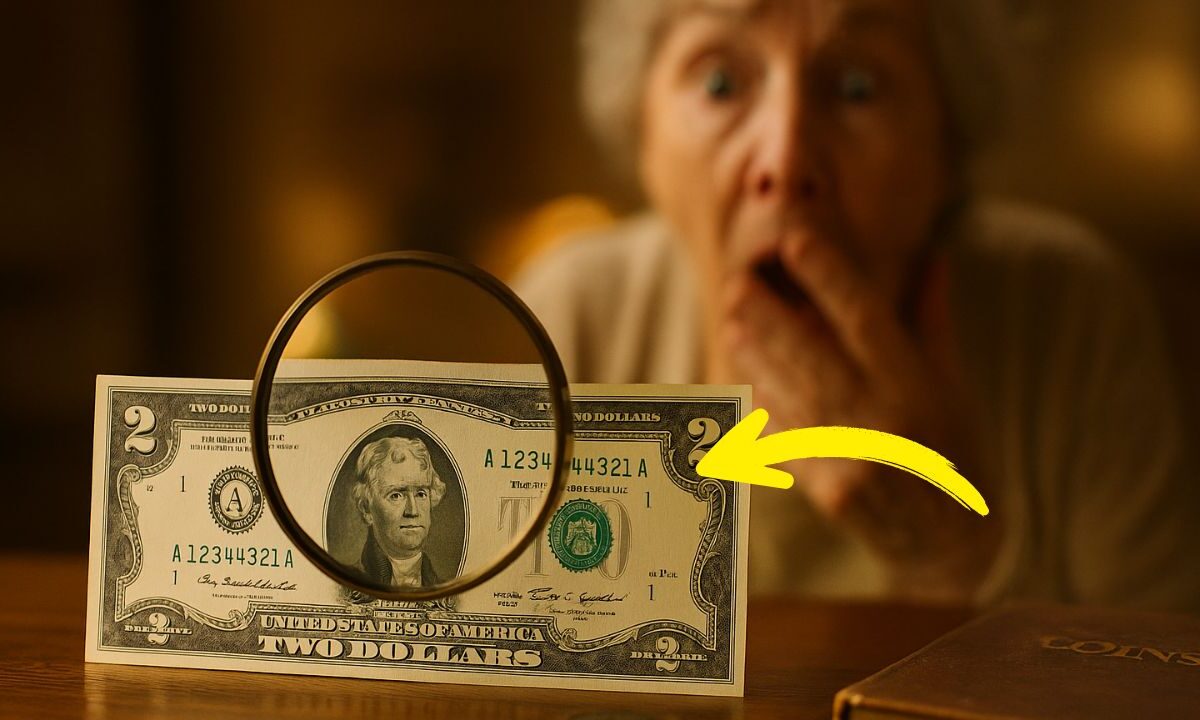In the world of currency collecting, certain notes transcend their face value to become prized treasures. One such example is a $2 bill featuring a palindromic serial number, which recently garnered significant attention in the numismatic community.
This article delves into the details of this rare bill, exploring its unique characteristics, the factors contributing to its high valuation, and how collectors can identify similar notes.
What Makes a Palindromic Serial Number Special?
A palindromic serial number is a sequence of digits that reads the same backward as forward. For instance, numbers like 1234321 or 2000200 are palindromes. In the context of U.S. currency, such patterns are exceedingly rare, making them highly sought after by collectors.
The appeal lies not only in the symmetry of the numbers but also in their rarity, as only a minute fraction of bills printed feature these patterns.
The $2 Bill with Serial Number 20002000
A notable example of a palindromic serial number is the $2 bill with the serial number 20002000. This bill recently sold for an astounding $66,500, highlighting the premium collectors are willing to pay for such unique notes.
Key Features
- Denomination: $2
- Serial Number: 20002000
- Condition: Uncirculated
- Sale Price: $66,500
The high value of this bill can be attributed to its repeater pattern, where the sequence of digits repeats, creating a visually appealing symmetry. Such patterns are rare in currency production, making bills like this highly collectible.
Factors Influencing the Value of Palindromic Bills
Several elements contribute to the elevated value of a $2 bill with a palindromic serial number:
1. Serial Number Pattern
As previously mentioned, palindromic numbers are rare. Collectors often seek out these patterns, and bills featuring them can command higher prices.
2. Condition
The state of preservation significantly impacts a bill’s value. Uncirculated bills, which show no signs of wear or handling, are more valuable than those that are creased or stained.
3. Year of Issue
Certain years are more desirable due to limited printing or historical significance. For example, the 1976 series is particularly sought after due to its bicentennial commemoration.
4. Star Notes
A star note is a replacement bill issued when a printing error occurs. These notes are rarer and often more valuable.
Identifying Valuable $2 Bills
Collectors can look for specific characteristics to identify potentially valuable $2 bills:
1. Unique Serial Numbers
Patterns such as all zeros (00000000), repeating sequences (11111111), or palindromes (1234321) are highly prized.
2. Low Serial Numbers
Bills with low serial numbers, especially those starting with multiple zeros, are considered rare and can fetch higher prices.
3. Star Notes
A star symbol at the end of the serial number indicates a replacement note, which is typically more valuable.
4. Misprints and Errors
Printing errors, such as misaligned serial numbers or ink smears, can increase a bill’s value due to their rarity.
Comparison of Notable $2 Bills with Unique Serial Numbers
| Serial Number | Pattern Type | Sale Price | Condition | Year of Issue |
|---|---|---|---|---|
| 20002000 | Repeater | $66,500 | Uncirculated | 2017 |
| 00000008 | Low Serial | $1,631 | Worn | 2013 |
| 12344321 | Palindrome | $10,000+ | Uncirculated | 2003 |
| 88888888 | Solid | $5,000+ | Uncirculated | 2009 |
Note: Prices are approximate and can vary based on auction results and market demand.
The $2 bill with the serial number 20002000 serves as a testament to the fascinating world of currency collecting. Its sale for $66,500 underscores the value placed on unique serial numbers and the growing interest in modern notes among collectors. For those with an eye for detail, checking the serial numbers on your currency could reveal hidden treasures.
As the market for collectible currency continues to evolve, understanding the factors that contribute to a bill’s value can aid collectors in making informed decisions. Whether you’re a seasoned numismatist or a casual enthusiast, the allure of rare bills with palindromic serial numbers remains a captivating aspect of the hobby.
FAQs
Are all $2 bills with unique serial numbers valuable?
Not all, but many are. Collectors prize notes with patterns like 12344321, 00000001, or repeaters like 20002000.
How can I find out if my $2 bill is valuable?
Check the serial number, condition, and year. Then compare it with listings on auction sites or consult a currency collector.
Are $2 bills still being printed today?
Yes. While not common in circulation, they are printed by the Bureau of Engraving and Printing in limited quantities.

